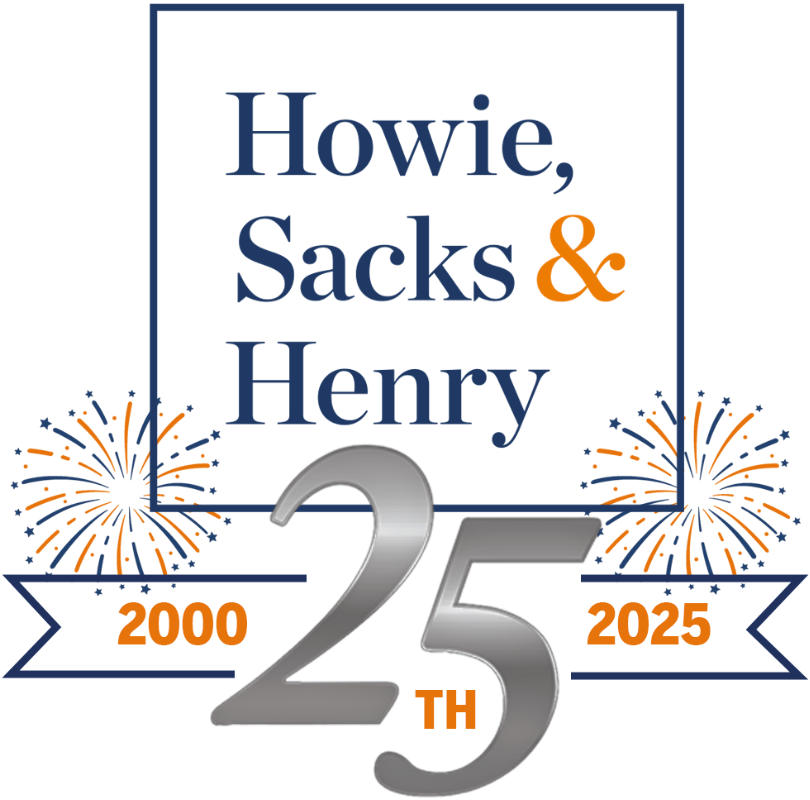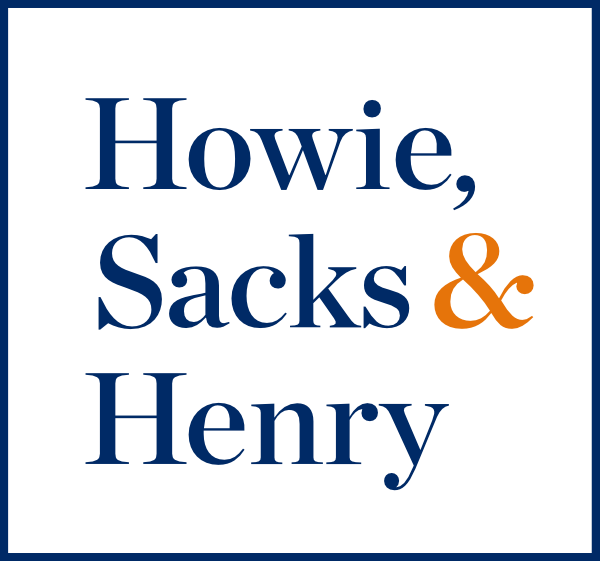
If you are ever seriously injured while in a foreign country, you will likely be thinking to yourself: “I just want to go home.” While there is definitely no place like home to convalesce and recuperate, what happens if you need to sue your insurer or an at-fault party to access benefits and compensation? Must you file these claims where you were hurt?
As is often the case with legal questions, the answer is dependent on a variety of factors.
This blog post will provide an overview of relevant case law on cross-border motor vehicle accidents (MVAs) involving Canadian plaintiffs who were injured in the United States.
In cases where a lawsuit needs to be brought against a non-resident defendant, Canadian courts have adopted a case-by-case analysis which examines a set of factors to determine the appropriate jurisdiction to hear the action. In addition to that lawsuit, Canadian courts have jurisdiction to hear cases where Canadian plaintiffs sue their Canadian insurance company for coverage from an accident involving an underinsured/uninsured American defendant.
The Supreme Court of Canada’s jurisdictional test
The Supreme Court of Canada (SCC) has provided directions to help lower courts determine whether they have jurisdiction to hear a matter. In Club Resorts Ltd. v. Van Breda, the Court helped to clarify the definition of “real and substantial connection” as a test for assuming jurisdiction. The decision outlined three main steps to determine jurisdiction:
- Is there a presumption of jurisdiction?
- Can the presumptive jurisdiction be rebutted?
- If the court has jurisdiction and it cannot be rebutted should the court decline jurisdiction in favour of a more appropriate forum?
To establish a presumptive jurisdiction, the Van Breda test would look to four existing/presumptive factors:
- (1) the defendant is domiciled or resident in the province;
- (2) the defendant carries on business in the province;
- (3) the tort was committed in the province; and
- (4) a contract connected with the dispute was made in the province.
Beyond these four existing factors, the court provided a method to determine if new presumptive factors could be taken into account by considering:
- (1) similarity of the connecting factors with the recognized presumptive connecting factors;
- (2) treatment of connecting factor in the case law;
- (3) treatment of the connecting factor in statute law; and
- (4) treatment of the connecting factor in the private international law of other legal systems with a shared commitment to order, fairness and comity.
While the presence of a recognized connecting factor does not automatically establish jurisdiction, the party disputing the assumption of jurisdiction must demonstrate that the proposed assumption of jurisdiction does not indicate any real relationship. This is accomplished by assessing the connecting factors.
The SCC also noted that a court “should not exercise its discretion in favour of a stay solely because it finds, once all relevant concerns and factors are weighed, that comparable forums exist in other provinces or states. It is not a matter of flipping a coin. A court hearing an application for a stay of proceedings must find that a forum exists that is in a better position to dispose fairly and efficiently of the litigation.”
Key case law on jurisdictional issues regarding snowbirds and other Canadian visitors injured in the U.S.
Van Breda has been widely cited as a leading case on jurisdictional issues. However, other important case law can assist when jurisdiction may be contested in an MVA involving snowbirds.
In Forsythe v. Westfall, the Ontario Court of Appeal reiterated Tamminga v Tamminga and the fact that an Ontario motor vehicle insurance policy is not a factor in itself that could satisfy the real and substantial connection test set out in Club Resorts Ltd v. Van Breda. In this case, an Ontario resident Rennie Forsythe was a passenger on a motorcycle who was injured when the driver lost control of the vehicle. The accident took place in British Columbia and the motorcycle driver, Michael Westfall, was an Alberta resident. Forsythe sued Westfall, his insurer and her own insurer in Ontario. Westfall brought a motion to stay the action because he contended Ontario lacks jurisdiction over him. The stay was granted and upheld on appeal. The SCC dismissed a further appeal.
In Cesario v. Gondek, the court ruled that: “Where there are multiple defendants, and at least one of them is resident or domiciled in Ontario, there is a sufficient real and substantial connection between the claim and Ontario that the court should assume jurisdiction over all aspects of the case.” Here, an Ontario resident’s car was rear-ended in Niagara Falls, New York, by a New York state motor vehicle. Four weeks later, the plaintiffs were involved in a second accident in Ontario. The plaintiffs brought an action naming the drivers of each of the other vehicles as defendants along with a suit against their own insurer pursuant to the underinsured provisions of their automobile insurance policy. The New York defendant brought a motion ordering a stay in the Ontario Court for lack of jurisdiction, but it was dismissed on the grounds that the principles of fairness and efficiency would be breached by forcing the plaintiffs to litigate three separate actions (one in New York and two in Ontario).
In Hartley v, Security National, Glen Hartley and Theresa Hartley were injured in a traffic accident in Minnesota when their motorcycle was struck by a State of Minnesota-owned truck, operated by a state employee. Mr. Hartley’s injuries were particularly serious. The Hartleys retained Minnesota counsel, sued the state for damages, and ultimately settled for $500,000 – the maximum payable by Minnesota to a tort claimant in the circumstances. Mr. Hartley, whose damages were in excess of $500,000, sought the balance in damages from his Canadian insurer, Security National Insurance Company based on the statutory Family Protection Coverage endorsement, (OPCF 44R). Security National refused to pay out the policy, contending that the State of Minnesota was not an inadequately insured motorist. The court disagreed, noting that Mr. Hartley’s attempt to obtain compensation from Minnesota for the entire damages he sustained was frustrated by the Tort Claims Act, Minn. Stat. 3.736; specifically, the $500,000 cap under subdivision 4(c) on the amount that can be claimed by an individual. The court allowed his underinsured coverage suit with his insurer to proceed in Ontario.
As these cases demonstrate, fact-specific considerations apply to jurisdictional tests.
Suing for accident benefits and uninsured or underinsured coverage in Ontario
Unlike torts on their own, when it comes to filing suit for accident benefits and claims on their insurance policies for un/underinsured coverage, Ontario courts have jurisdiction.
Section 4(1)(c) of Regulation 676 within the Insurance Act requires insureds to litigate their under/uninsured claims against their own insurer in Ontario.
Moreover, case law has shown that an action against the insurer for under/uninsured coverage is separate from the tort action against the non-resident defendant. In Gajraj v. DeBernardo the court applied the following principle: “the core of the claim is against the New York defendants and the claim against the Ontario defendant [the insurer] is entirely secondary and contingent. Jurisdiction over claims against extra-provincial defendants should not be bootstrapped by such a secondary and contingent claim against a provincial defendant.”
It is also important to consider the different limitation period in under/uninsured cases. Schmitz v. Lombard General Insurance Company of Canada confirmed that the limitation period for an underinsured motorist claim does not start at the date of the accident. Rather, it begins when there is a breach of contract (the day after a demand for indemnity by the insurance company). This delay allows accident victims to ascertain whether there is a viable insurance before commencing a claim against their own insurer.
Key case law for claims against a plaintiff’s own insurer for underinsured coverage
Somersall v. Friedman is an SCC decision cited in most underinsured cases. Two claimants (hereafter referred to as the respondents) voluntarily compromised their recovery rights against the tortfeasor (an underinsured at-fault motorist) by entering into a limits of liability contract without notice to their insurer. This agreement provided that (1) the tortfeasor would admit liability at trial and (2) the respondents would not sue him in excess of his liability coverage. When the insurer (the appellant) cross-claimed against the tortfeasor, he submitted a defence that the respondent’s insurer was bound by the limits agreement. The SCC ruled the respondents had not interfered with the appellant’s rights of subrogation to such an extent as to deprive it of a right it acquired in the contract. The court stated:
“The limits agreement, like a limitation period, does not block the action. It has no bearing on the right of the insured against the tortfeasor at the time of the accident, which is the relevant time for the determination of legal entitlement. The promise by the respondents not to pursue the underinsured motorist beyond his policy limits has no bearing on any question of the legal entitlement that existed at the time of the accident. It only renders the respondents unable to further their legal rights against the tortfeasor in the courts.”
The court also noted: the plain language of the contract does not support a finding that the limits agreement interfered with a contractual right of the appellant. The only clear obligation on the insured is to “cooperate with the insurer” (except in a pecuniary way) in the pursuit of the action, but this obligation only arises once a payment has been made, and no payment has yet been made here. If there is an ambiguity in the content of this obligation, the interpretive principle contra proferentem would demand that it be resolved in favour of the insured.”
In Beausoleil v. Canadian General Insurance Co., plaintiff Gerard Beausoleil was injured in a motor vehicle accident by an underinsured driver where the maximum recovery of $50,000 would not cover all of his damages. Beausoleil brought an action against his own insurer claiming substantial damages with members of his family joining the action under the provisions of the Family Law Act, before the suit against the at-fault driver was going to settle in Massachusetts. Beausoleil’s insurer disputed his right to make a claim prior to judgement in Massachusetts. The Ontario Court of Appeal ruled that the plaintiff is not required to obtain a judgement or to exhaust his remedies against the tortfeasor in the US as a pre-condition to an action in Ontario for the underinsured claim.
Finally, Kovacevic v ING Insurance, the plaintiffs were injured by a tractor/trailer in a motor vehicle accident in Florida. They settled the Florida action for $300,000, when there was an available policy limit of $1,000,000. The plaintiffs signed a full and final release for $300,000. The plaintiffs were insured under a standard Ontario motor vehicle liability policy with $2,000,000 limit and an OCPF 44R endorsement. The insurer brought an action for emphasized that an insured cannot intentionally settle an action for less than the tortfeasor’s available policy limits and then bring an action against its own automobile insurer for underinsurance coverage. The plaintiffs were injured in a motor vehicle accident in Florida and sued the owner of the tractor and trailer. The plaintiffs settled the Florida action for $300,000 and signed a full and final release. The plaintiffs brought an action in Ontario for underinsurance coverage against ING. The court ruled that an insured cannot settle an action for less than the tortfeasor’s available policy limits and then bring an action against their own automobile insurer for underinsurance coverage.
The benefit of experience
A thorough understanding of case law is incredibly valuable to prospective plaintiffs who are deciding who to sue, when to sue, and where to sue. While there is always a degree of unpredictability in how a given judge will rule on a matter, parsing case law to determine which principles apply and understanding how and why fact-specific considerations give more or less weight to this case law can be influential in obtaining a favourable ruling.
While consulting and retaining American counsel to assist with a potential tort claim in an American court is often advisable, it is essential to understand the implications of these actions if there is any possibility that an injured person will also need to prevail on a Canadian court (or if it would be more appropriate to seek jurisdiction in a Canadian court for all matters relating to the injury).
If you or a loved one have been injured in a motor vehicle accident in the United States of America, it is worth your while to seek out an experienced Canadian personal injury lawyer for legal advice. At Howie, Sacks and Henry LLP, we offer a free, no obligation initial consultation to injury victims in which we listen attentively and with empathy as you tell us your story, outline your legal options, and offer advice on how to proceed in a way that protects your legal rights. If we believe we can successfully access compensation for you, we will gladly offer to represent you. And, if you are already working with an American personal injury attorney or will need to retain an American attorney, HSH LLP is pleased to negotiate and honour co-counsel arrangements.
Whether you’re injured in Canada or abroad, HSH LLP is here to help in any way we can as you start down the road to recovery.






